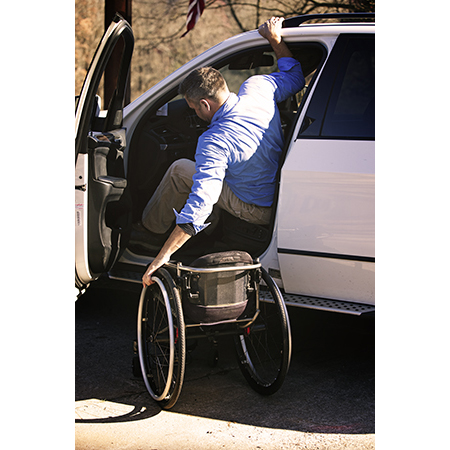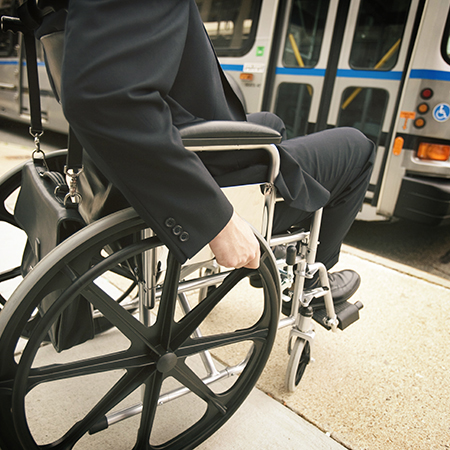A wheelchair transfer is one activity that puts a lot of strain on your upper body, which is why it’s vital to do it properly and safely.
After your spinal cord injury, recovery, and rehabilitation, your wheelchair is an integral part of your new mobility. However, you’ll need to regularly get in and out, so knowing the proper wheelchair transfer technique is essential to avoid falls and accidents.
Also, wheelchair transfers put a lot of strain on your upper body. Arms, wrists, shoulders, and neck are all impacted with every wheelchair transfer. So, the more you can do to alleviate stress and avoid muscle strains and cramps, the better off you’ll be long term.
5 steps for a safe and efficient wheelchair to car transfer
When performing a wheelchair to car transfer, the correct technique involves five key steps:
1. Get in the right position and setup: Get as close as you can to where you want to transfer to (a surface or back to your wheelchair). Ensure the wheels are locked and your armrests or other obstacles are out of your way. Put your feet on the floor and scoot to the edge.
2. Lean your trunk forward: Move your head in the opposite direction of your hips as you perform the wheelchair transfer. Your head and hips are closely interconnected, so doing this properly can help with movement and clearing obstacles.
3. Keep your arms close to your body: It’s important that you follow this transfer technique as you are lifting your weight to help protect your shoulders. A good benchmark is keeping your arms about 30 to 45 degrees away from your body.
4. Grab with your fingers: When gripping an edge or grab bar, avoid laying your hands flat. Consistently putting weight on your palms puts extreme stress on your wrists and could lead to carpal tunnel syndrome.
5. Lift off (gently): Be sure to watch out for any obstacles to avoid scratches, chafing, and pressure sores. Try to wheelchair to car transfer in one seamless move (with your arms close to your body). It’s okay to move in several small increments or use a transfer board if you have to. Try not to slide across the transfer board, which could cause skin damage — a pad or towel on the transfer board may help too.
It’s a good idea to alternate the side you transfer in and out of your wheelchair as well. Doing so helps balance the stress put on both sides of your upper body. Avoiding gains in body weight will also help alleviate the stress of frequent wheelchair transfers.
Need help? Consult with your therapist for wheelchair transfer training
Wheelchair transfers are a frequent task that is unavoidable, so it’s vital that you follow the proper technique and minimize stress on your upper body. If you have difficulty completing wheelchair transfers or have unique challenges, check in with your occupational therapist for individualized training. He or she may be able to solve your wheelchair transfer issues or suggest assistive equipment, slide boards, or lifts that you may need.









